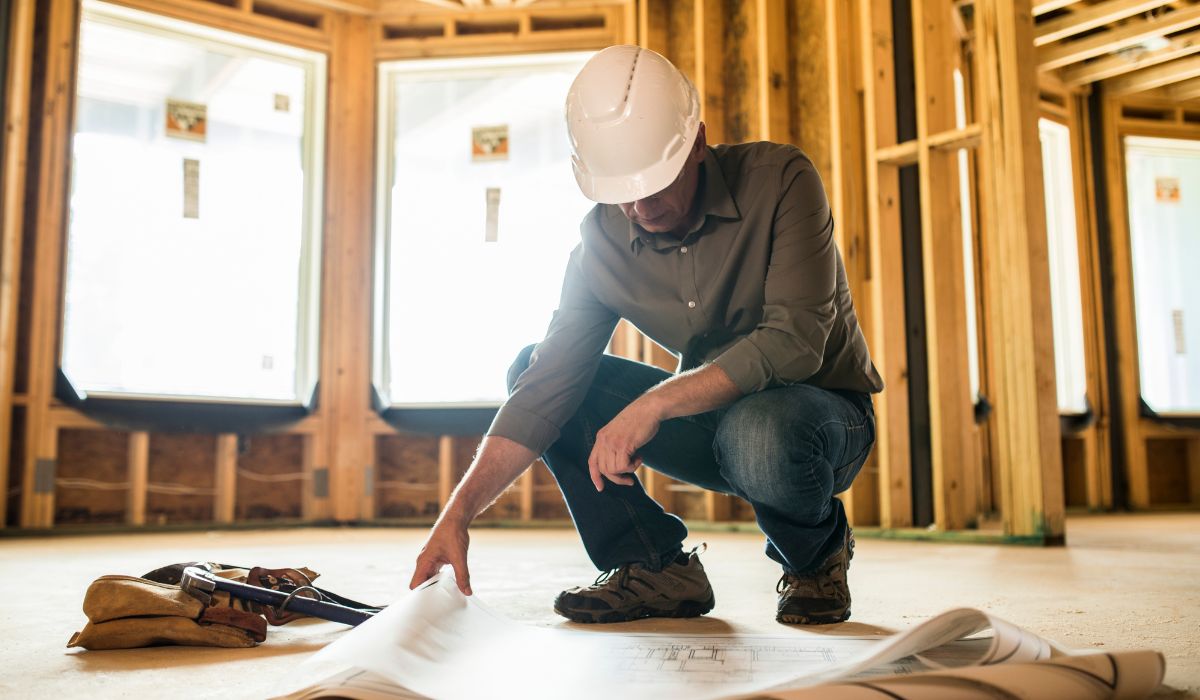Navigating the regulatory landscape can be difficult when starting a new building project, but one of the most crucial permissions that builders, designers and home owners may need to obtain is a building project dispensation from a third-party authority. There are a myriad of reasons why those starting new projects may need to gain this dispensation approval, but they are usually applicable any time a building proposal deviates from standard regulations.
If this is the case, then builders and home owners will need to obtain the Report and Consent of a relevant authority (such as council, a water service authority, Building Appeals Board, etc) to permit a dispensation from the relevant regulation. It is during the process of obtaining approval that many projects stop in their tracks, either unaware of the need to go through a building project dispensation process, or how to properly present their proposal in a way that a relevant authority deems it suitable.
That’s why in this article, we’ll take a deeper dive into the reasons you may need to obtain dispensation approval, the challenges you may need to navigate during this process and the best ways you can navigate these obstacles and start building quicker.
Report And Consent Requirements To Observe
As stated above, there are a wide range of reasons you may need to obtain a Report and Consent approval prior to the start of your build and avoid any potential issues with your local council or water authority. From building height regulations to potentially building over a service easement, it is always beneficial to check if your build may deviate from the Regulations and plan out the Report and Consent application process accordingly.
The two core reasons you will need to pursue an approval are if your design will not meet the minimum standards outlined in the Building Regulations 2018 legislation, or if your build may affect community assets or infrastructure. Some of the most common reasons to apply for Victorian Report and Consent dispensations are:
- Front Setback Variations: When proposed buildings encroach upon or deviate from the prescribed setback requirements from the street frontage.
- Overlooking: Addressing concerns related to overlooking neighbouring properties, especially relevant in multi-story developments.
- Daylight to Windows: Ensuring sufficient access to natural daylight for habitable spaces within the building.
- Building Height and Setbacks: Obtaining consent for exceeding the maximum allowable building height for a prescribed setback from boundaries as stipulated by the Regulations.
- Site Coverage: Seeking approval for exceeding the maximum allowable site coverage area.
- Fences and Walls: Seeking consent for variations in fence or wall heights beyond standard Regulations.
Builders and designers are probably aware of most of these and some of the other additional reasons to apply for Report and Consent dispensation. But what many of our clients here at Deemed To Perform Consulting are not aware of are the intricacies of the approval process with their local council. In particular, what they are looking for within each application and the impact of adjoining neighbour objections. Without factoring in some of the below potential challenges, home owners may find themselves stuck in the approval process and unable to kick off their next project.

Preventing Interruptions To Your Building Project Dispensation Approval Process
Avoiding interruptions during the approval process for any building project is crucial for both builder and home owner. It may lead to lower profit margins for the construction company and an annoyed home owner who would prefer an expedited build process. If you’ve determined that you need to obtain a Report and Consent approval, then you need to consider the below items to avoid receiving a rejection letter and be forced to re-design and re-submit:
Understanding The Complicated Regulatory Framework
Navigating the myriad of planning and building regulations governing Report and Consent applications can be overwhelming. Understanding the specific requirements and criteria applicable to each situation is essential but can be time-consuming and complex, particularly for inexperienced builders or home owners without an in-depth knowledge of the relevant legislation.
If you’re unsure of what regulations you need to abide by when planning a construction project then you may need to reach out to your local council or obtain the advice of a building surveying consultant. These contact points may be able to give you advice on how you can tailor your solution to meet the regulatory requirements and avoid interfering with any neighbouring properties or council assets.
Technical Documentation
Providing comprehensive and accurate technical documentation to support the Report and Consent application is crucial. However, compiling these documents, including architectural plans, engineering reports, and other supporting materials, can be a significant challenge, especially for inexperienced applicants.
Once again, this is where seeking the advice of a building surveyor consultant, like Deemed To Perform Consulting, may be helpful. Experienced consultants in this space can help you properly prepare a document package to present to your council that will meet their exact requirements during this application process.
Community Consultation
In some cases, proposed deviations may impact neighbouring properties, leading to concerns or objections from affected stakeholders. Whilst you’re not required to notify neighbours prior to the council making their decision, it is advisable to do so, particularly when these designs may have potential impacts in the surrounding area. The local council may also seek the opinion of these neighbours as part of the approval process, so better to have them on your side than not!
Timelines and Deadlines
The Report and Consent approval process is often subject to strict timelines and deadlines, adding pressure on applicants to submit thorough and timely applications. Delays in the approval process can lead to project setbacks and increased costs, making adherence to deadlines critical. Ensuring that you’ve done your research, prepared your paperwork and made an application in line with your build process will be key to a successful application process.

Additional Dispensation Avenues
Need to modify certain technical provisions of applicable Building Regulations or making an alteration to an existing building? There are other dispensation avenues outside of the Report and Consent process detailed above, starting with pursuing a Modification or exemption from the Building Appeals board.
Those seeking dispensations on technical matters may make a direct appeal to the Building Appeals Board under Section 160 of the Building Act, who will assess whether a particular provision of the Building Regulations 2018 (Regulations) or the Building Code of Australia should not apply or apply in modified form to your project. When seeking a modification, applicants must demonstrate to the Board that this modification is reasonable and not against public interest. When seeking exemption, applicants must justify why the provision is inappropriate for their circumstances. Application documentation should include relevant drawings, recent title search statements, specifications, neighbour comments if applicable, proposed mitigation measures, and justification for the requested changes.
If you instead need to make a modification to an existing building, like an extension, you may be able to obtain consent for partial compliance if needed from your private building surveyor depending on the volume and floor area of your additions. This could save you valuable time by only needing to ensure all new building work complies with the National Construction Code, instead of the entire existing building. To see if your alteration or extension is able to obtain consent to partial compliance, view the tables below or check out this document from the Victorian Building Authority:
Table 1: Application of Regulations and availability of partial compliance for alterations to existing buildings
|
Volume alteration |
Application & Limitations |
Consent to partial compliance |
|
Less than 50% of existing building, including work done in the past 3 years |
· New building work only must comply with the Regulations – reg 233(1) & (2) |
Available |
|
50% of existing building or greater, including work done in the past 3 years |
· New building work and existing building must comply with the Regulations – reg 233(1) & (2) · Existing building may be considered in partial compliance determination – reg 233(3) · Limitations on partial compliance remain present for extensions – see Table 2 |
Available |
Table 2: Application of Regulations and availability of partial compliance for extensions to existing buildings
|
Floor area of extension |
Application & Limitations |
Consent to partial compliance |
|
Less than 25% of existing building |
· New building work only must comply with the Regulations – reg 233(6) · New building work and existing building may be considered in partial compliance determination |
Available |
|
Extension greater than 25% of the existing building (or the lesser of 25% or 1000m2) |
· New building work only must comply with the Regulations – reg 233(3) & (6) · Applies to the extension component of building work only · Existing parts of the building may still be subject to partial compliance determination – see Table 1 |
Not available |
Obtaining Approval For Your Project Efficiently
By understanding the regulatory requirements, engaging early with relevant authorities, and preparing comprehensive documentation, applicants should be able to navigate the building project dispensation process efficiently and achieve the necessary approvals for their projects. While there certainly are challenges that applicants need to overcome, with the right preparation and communication with your relevant building surveyor you should be able to navigate these bumps in the road and successfully obtain permission to start building.
Builders and home owners who are not 100% comfortable with this process, particularly if they are inexperienced in preparing documentation for building permits, should consider the services of a building surveyor consultant like Deemed To Perform Consulting. We’ve been working in the construction industry for over 17 years and have helped many clients avoid interruptions to their build processes with thoroughly prepared documentation, created with the knowledge of what relevant authorities want to see when assessing these applications.
To learn more about our services and how we can assist with your next application call us today on 0404 300 268 or contact us via email at hello@deemedtoperform.com.au.




